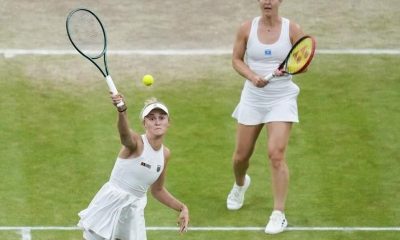- China is suffering from “economic long COVID,” Adam Posen wrote in Foreign Affairs.
- Its sluggish post-COVID rebound may be a long-term trend, said the Peterson Institute’s president.
- Like other authoritarian regimes, China’s economic development is following a predictable pattern, he noted.
China’s economy can rightly be compared to COVID cases where symptoms keep lingering and leave the infected weak for the long term, an expert wrote in Foreign Affairs.
And financial markets have yet to fully grasp how bad the situation is, according to Adam Posen, president of the Peterson Institute for International Economics.
“Call it a case of ‘economic long COVID,'” he wrote, adding that China “has not regained its vitality and remains sluggish even now that the acute phase — three years of exceedingly strict and costly zero-COVID lockdown measures — has ended.”
After Beijing reversed China’s zero-COVID restrictions at the end of 2022, markets expected a blowout recovery.
There was a glimpse of that in the first quarter, but subsequent growth in manufacturing, consumption, exports, and investments dropped off drastically. Meanwhile, debt turmoil continues to drag down local governments and the country’s massive real-estate sector.
Still, growth forecasts for the country remain relatively optimistic, despite coming down from earlier highs. Bank of America and Goldman Sachs, for example, have trimmed less than a point from 2023 forecasts. The International Monetary Fund sees 4.5% growth in 2024, outdone by a 5.1% outlook from the Organization for Economic Cooperation and Development.
To Posen, however, China is in a much more serious, long-term malaise. It’s not due to the pandemic, but comes from Beijing’s expanding grip on the economy.
“Economic development in authoritarian regimes tends to follow a predictable pattern: a period of growth as the regime allows politically compliant businesses to thrive, fed by public largess,” he said, pointing to Russia, Venezuela, and Turkey as other examples.
“But once the regime has secured support, it begins to intervene in the economy in increasingly arbitrary ways. Eventually, in the face of uncertainty and fear, households and small businesses start to prefer cash savings to illiquid investment; as a result, growth persistently declines.”
In China’s case, President Xi Jinping’s extreme response to COVID made the public “immune” to major intervention, producing a less dynamic economy, Posen said.
Whereas China’s Communist Party was more hands off in previous decades, growing control over the private sector peaked in the zero-COVID era.
And the abrupt end to that policy won’t revive growth, as it demonstrated the economy remains “at the mercy of the party and its whims,” he added.
To “self-insure” amid such uncertainty, people hoard cash and spend less on assets that aren’t easily convertible to cash, such as cars, business equipment, and real estate.
“The condition is systemic, and the only reliable cure—credibly assuring ordinary Chinese people and companies that there are limits on the government’s intrusion into economic life—cannot be delivered,” Posen said.
And any of Beijing’s stimulus measures will not produce the intended results as consumers remain wary of further disruptions.
“Low appetite for illiquid investment and low responsiveness to supportive macroeconomic policies: that, in a nutshell, is economic long COVID,” he wrote.
It’s already happening: though China’s central bank has cut interest rates and stimulus efforts have been pledged in the most recent Politburo meeting, there’s been little improvement in economic activity.
Despite the West’s growing tensions with Beijing, China’s economic woes aren’t necessarily good news for its rivals either, Posen said.
“When another global recession hits, China’s growth will not help revive demand abroad as it did last time. Western officials should adjust their expectations downward, but they should not celebrate too much,” he wrote.
.content-lock-lock .hidden
display: none;























